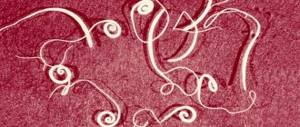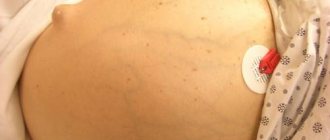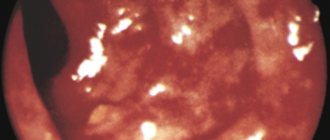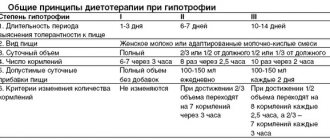The term “acute abdomen” refers to suddenly developed acute, life-threatening diseases of the abdominal organs, which require or may require urgent surgical or other types of assistance.
In rare cases, symptoms of an acute abdomen are observed in diseases of organs located outside the abdominal cavity.
The diagnosis is temporary, it is made in an emergency situation, when there is no time and conditions for a detailed study and it is not possible to accurately determine the cause of the disease in a patient in need of immediate medical attention.
The primary medical examination of the patient is often carried out outside the hospital (at home or in a clinic). The task of the primary diagnosis of an “acute abdomen” is to recognize a dangerous situation and the need for urgent treatment.
In case of acute abdomen, the prognosis worsens over time, so the patient must be urgently hospitalized in a hospital, where the necessary diagnostic and therapeutic measures will be carried out in the near future.
Causes of acute abdomen:
- Closed and open injuries of the abdominal organs and retroperitoneal space.
Inflammatory diseases of internal organs with or without perforation:
- Peritonitis.
- Appendicitis.
- Stomach and duodenal ulcers.
- Crohn's disease.
- Ulcerative colitis.
- Diverticulitis.
- Pancreatitis.
- Gastritis.
- Perforation of a hollow organ (compression from the outside or inside), up to intestinal obstruction.
- Intestinal obstruction: disturbance of intestinal passage (commissural tumors).
- Ectopic pregnancy and inflammatory diseases in the appendages, fallopian tubes, and uterus.
- Acute disorders of mesenteric circulation (arterial or venous).
Typically, symptoms of an acute abdomen require immediate hospitalization and surgical treatment. Additional diagnostic and diagnostic measures are carried out in the hospital.
So, in order to be fully prepared and distinguish the symptoms of an acute abdomen, you should immediately call an ambulance if:
Symptoms
The pain usually increases over several hours. Initially, until the parietal peritoneum is involved, the pain is widespread, without clear localization. As the peritoneum is involved, the pain becomes localized. Movement increases pain, protective tension and rigidity of the abdominal wall muscles occur.
Pain in the form of colic with spasms, due to which patients writhe and bend. Colic that does not disappear between spasms suggests a complication such as inflammation.
When an internal organ is perforated, pain occurs suddenly - this is a serious condition leading to the development of peritonitis.
If there are signs of peritonitis (for example, protective tension and rigidity of the abdominal wall muscles, pain when removing the hand during palpation), emergency measures must be taken to restore vital parameters. If these signs are absent, further examination of the patient is necessary.
Acute abdominal pain in the elderly
Clinical manifestations are severe and localized, which may become dull with age. Atypical complaints are possible, even with perforation of a hollow organ.
Cancer is the most common cause of acute pain in people over 70 years of age compared to people under 50 years of age. In this regard, elderly people with unclear symptoms of gastrointestinal tract damage should be carefully examined.
Nonspecific symptoms—Intra-abdominal inflammatory processes, such as diverticulitis, may present with nonspecific symptoms, such as confusion or anorexia and relatively mild abdominal muscle tension. The reasons are unclear, but they may be related to impaired sensitivity.
The outcome of abdominal surgery is determined by the severity of concomitant diseases and the plannedness or urgency of the operation more than by the passport age.
Symptoms of acute abdomen:
- Suddenly, severe pain appeared (maybe in one place, or maybe throughout the abdomen).
- The pain may radiate to the chest, shoulder, or other abdominal organs.
- Muscular protection (tension of the anterior muscular wall of the abdominal cavity). Often appears along with pain or after it.
So-called functional disorders of digestion, less often urination:
- Vomiting (appears in the first hours of the disease. Vomit consists of the remains of eaten food. Vomiting in later stages of the disease, sometimes with an admixture of stagnant contents. Vomiting in the later stages of the disease has a fecal character).
With stomach bleeding, the vomit is the color of coffee grounds or contains scarlet blood.
- Nausea.
- Hiccups (sometimes persistent and painful hiccups are observed - this is due to irritation of the phrenic nerve).
- Retention of stool and gases (with an acute abdomen, the passage of intestinal contents is impaired. Retention of stool and gases is caused by dynamic or mechanical obstruction of the intestine. Less common is loose stools (with intussusception).
- An important symptom of an acute abdomen is a change in feces (melena is characteristic of gastric bleeding. An admixture of scarlet blood occurs with intussusception and acute disorders of mesenteric circulation).
- Urinary retention.
- You feel disgusting (change in consciousness to one degree or another.
- Symptoms of vascular collapse: cold sweat, rapid and superficial pulse, pallor, fainting, sharpened facial features.
- Yellowness of the sclera and skin.
- Increasing dehydration, the eyes seem to fall inward.
Examination and treatment
Laboratory research.
When making a diagnosis and during treatment, blood and urine tests are performed.
General blood analysis. An acute abdomen is characterized by leukocytosis, especially in the presence of inflammation or infection. With septic syndrome, viremia and during treatment with immunosuppressants, leukopenia is possible. Low hematocrit and hemoglobin levels indicate chronic anemia or recent internal bleeding or rupture of a blood-filled internal organ. Thrombocytopenia may increase gastrointestinal bleeding; it is also observed in sepsis. Malignant neoplasms can be accompanied by both thrombocytosis and thrombocytopenia.
Serum electrolyte levels should be measured regularly because fluid and electrolyte disturbances may develop in patients with an acute abdomen.
If the patient's condition is serious, constant monitoring of blood glucose control is also indicated .
Serum amylase activity may increase in acute pancreatitis, intestinal obstruction and intestinal ischemia, as well as in diseases that do not give a picture of an acute abdomen, for example, diseases of the salivary glands, renal failure, macroamylasemia.
An increase in the level of bilirubin, the activity of AST, ALT and alkaline phosphatase is observed in diseases of the liver or biliary tract. Increased ALP activity may be an early sign of extrahepatic or intrahepatic bile duct obstruction.
General urine analysis . Possible leukocyturia in acute pyelonephritis or hematuria in urolithiasis.
ECG. Performed on all patients to assess their condition and to identify possible changes characteristic of myocardial infarction.
Radiation diagnostics.
A chest x-ray is required . It allows you to identify pneumonia, pulmonary embolism, accumulation of free gas under the diaphragm, expansion of the mediastinal shadow (a sign of dissecting aneurysm). Plain radiography of the abdomen in a standing and lying position can detect fluid levels in the colon and small intestine, free gas in the abdominal cavity, and calcifications. An abscess or other mass formation can displace intestinal loops. Pronounced dilatation of the intestine is observed with intestinal obstruction and toxic megacolon.
Ultrasound, CT, cholescintigraphy with iminodiacetic acid derivatives and excretory urography can provide valuable additional information.
Diagnostic laparocentesis
In some cases, examination of ascitic fluid or fluid previously injected into the abdominal cavity can help make the diagnosis. Leukocytosis indicates the presence of infection; Culture of ascitic fluid in these cases often gives positive results. An admixture of blood may indicate bleeding from the abdominal organs, organ infarction, or pancreatic necrosis. Amylase activity is increased in intestinal infarction and pancreatitis.
The safest site for inserting a needle during laparocentesis is in the midline of the abdomen, 2 cm below the navel. There are few vessels passing through this area of the abdominal wall, but there is a danger of touching a distended bladder. The midline approach cannot be used if there is a postoperative scar in the midline of the abdomen. In this case, laparocentesis is safer and more reliable, performed using a peritoneal dialysis catheter, which is inserted through an incision on the side of the midline of the abdomen.
Diagnosis of acute abdomen:
For a correct diagnosis, the doctor must examine the patient:
- The abdomen is palpated (carried out very carefully, superficially at first. Deep palpation is used carefully, it can cause a painful reaction in the body, which will not give a complete picture of the condition of the abdominal organs).
- Pay attention to the appearance of the patient, his position in bed (as a rule, it is forced, with his knees brought to the stomach).
- During palpation, the degree of muscle protection is determined - tension of the abdominal wall and the peritoneal Shchetkin-Blumberg sign.
- They look at changes in the abdomen (bloated or enlarged, or maybe retracted. Is it involved in the act of breathing, is it asymmetrical and unevenly swollen).
- They look for the presence of postoperative scars.
- Percussion of the abdominal wall is performed (it helps to detect a decrease in the boundaries or disappearance of hepatic dullness. This is typical for perforation of a hollow organ and the presence of free fluid in the abdominal cavity).
- Auscultation (assess the nature of intestinal peristalsis: the absence of peristaltic sounds or their significant increase allows one to suspect intestinal obstruction).
- Rectal examination: determine pathological processes developing in the pelvic area.
- Vaginal examination: determine the condition of the internal genital organs.
Laboratory and instrumental studies:
- Changes in peripheral blood are detected.
- Urine.
- Biochemical composition of blood.
Instrumental diagnostics:
- Radiography.
- Ultrasonography.
- CT scan.
- Nuclear magnetic resonance imaging of the abdominal organs.
Forecast
The outcome of the disease depends on the following factors:
- nature of the disease;
- its heaviness;
- time from onset of illness to hospitalization;
- patient's age;
- presence of concomitant diseases.
Only the time to seek help depends on the patient and his relatives: the sooner the ambulance is called, the greater the chances of recovery. In addition, you should remember: before the doctor arrives, you should not eat, drink, or take medications, especially laxatives and painkillers.
Acute abdomen in gynecology:
Acute intra-abdominal bleeding:
The cause is a disrupted ectopic pregnancy or ovarian apoplexy:
- Periodic cramping pain, short-term. Such pain occurs in the second half of the menstrual cycle.
- The pain intensifies after physical activity, radiating to the leg, anus, and rarely to the area of the collarbone or scapula.
- Dysuria.
- With severe bleeding, anemia develops.
Violation of the internal genital circulatory system:
The reason is the torsion of the legs of tumors and ovarian cysts. For torsion and necrosis of myomatous nodes:
- Acute pain, paroxysmal, radiating to the perineum, lower back, thigh.
- Dysuria, nausea and vomiting.
- A sharp increase in pain when trying to change body position.
- Anxiety, cold sweat.
- The abdomen is swollen and tense.
- Body temperature remains normal.
Acute inflammatory diseases:
Acute inflammation of the internal genital organs involving the peritoneum in the pathological process.
Classification
There are 4 types of abdominal pain.
- visceral. The intestinal organs are insensitive to stimuli such as heat and cutting, but are sensitive to expansion, contraction, rotation and stretching. Pain from azygos organs is usually (but not always) felt in the midline.
- parietal. The parietal peritoneum is innervated by somatic nerves and its involvement in pathological processes, such as inflammation, infection or neoplasia, causes acute, well-localized unilateral pain.
- detached. For example, pain in the gallbladder radiates to the back or shoulder.
- psychogenic. Each person's perception of pain is influenced by cultural, emotional and psychological factors. In some patients, no organic cause is found despite the completeness of the examination, in which case psychogenic pathology (depression or somatoform diseases) may be a causative factor.
Help with acute abdomen:
- Place the patient to bed immediately.
- Apply cold to the abdominal area.
- Do not give: drink, eat, no painkillers or antibiotics.
- Wet your lips if you are very thirsty or rinse your mouth.
- It is prohibited to: give enemas or give laxatives to the patient. They increase intestinal motility, and the infection spreads faster.
- Urgently hospitalize.
Pseudoabdominal syndrome:
It can mimic the symptoms of an acute abdomen, in which abdominal pain is caused by diseases of organs located outside the abdominal cavity:
- Acute pneumonia.
- Myocardial infarction.
These diseases have symptoms of an acute abdomen, but they are treated conservatively and outside the surgical department.
Symptoms of appendicitis:
- Dull pain near or below the navel, with a shift to the lower right side of the abdomen.
- Loss of appetite.
- Bloating.
- Obstruction of gases.
- Nausea and vomiting immediately after the onset of pain.
- Fever.
- Dull or sharp pain in the rectum and back.
- Pain when urinating.
- Severe cramps.
- Constipation or diarrhea with gas formation.
- In the blood, leukocytes increased to 12,000,000/ml.
Symptoms of acute appendicitis are divided into:
- Kocher-Volkovich: displacement of pain from the epigastric region of the abdomen to the rectus iliac region.
- Bartomier-Mikhelson: increased pain on palpation of the right iliac region with the patient positioned on the left side.
- Obraztsova: increased pain during palpation in the right iliac region when raising the right leg straightened at the knee joint.
- Rovzinga : manifestation or intensification of pain in the same area when pressing on the left iliac region.
- Sitkovsky: the appearance or intensification of pain in the right side when the patient turns on the left side.
- Shchetkina-Blumberg (peritonitis): increased pain at the moment of sudden removal of the pressure-producing hand.
Video on how to correctly identify appendicitis:
Symptoms of acute pancreatitis:
- Presence of symptoms: vomiting, hypotension, flatulence, anuria.
- Kerte's symptom: swelling along the transverse colon. Tension of the anterior abdominal wall.
- Mayo-Robson: pain is localized in the left costovertebral angle.
- Voskresensky: absence of pulsation of the abdominal aorta.
- Shchetkina - Blumberg: increased pain at the moment of sudden removal of the pressure-producing hand (peritonitis).
Symptoms of acute diverticulitis:
- Sharp pain.
- Diarrhea turning into constipation and vice versa.
- Fever.
- Rectal bleeding.
- Dysuria.
Diagnostics:
- Bloating.
- Acute stomach.
- Leukocytosis.
- Increased ESR.
- Increased levels of C-reactive protein.
- Pain on palpation of the abdomen.
- Symptoms of muscle protection.
- Symptoms of local peritonitis.
Symptoms of acute cholecystitis:
- Tapping along the costal arch on the right, the patient feels a sharp increase in pain.
- Symptom of interrupted inspiration: when pressing with fingers under the right hypochondrium, the patient is asked to inhale, while the patient feels a sharp increase in pain.
- The pain radiates to the shoulder and shoulder girdle.
Perforated ulcer of the stomach and duodenum symptoms:
- Patients experience severe pain in the epigastrium, the pain is like a “dagger blow.”
- The patient lies on his side or back, with his legs pulled up to his stomach.
- Percussion: there is no hepatic dullness.
- Ascultative: absence of bowel sounds.
Gastrointestinal bleeding symptoms:
- The pain disappears after the onset of ulcerative gastric bleeding.
- Vomit the color of coffee grounds and melena.
Causes
Inflammation. The pain usually increases over several hours. Initially, until the parietal peritoneum is involved, the pain is widespread, without clear localization. As the peritoneum is involved, the pain becomes localized. Movement increases pain, protective tension and rigidity of the abdominal wall muscles occur.
Perforation. When an internal organ is perforated, pain occurs suddenly - this is a serious condition leading to the development of peritonitis.
Obstruction. Pain in the form of colic with spasms, due to which patients writhe and bend. Colic that does not disappear between spasms suggests a complication such as inflammation.
Other (rare) causes.
Extraintestinal causes of chronic or recurrent abdominal pain
| Pathology of the retroperitoneal region | Aortic aneurysm |
| Malignant formation | |
| Lymphadenopathy | |
| Abscesses | |
| Psychogenic | Depression |
| Anxiety | |
| Hypochondria | |
| Somatoform disorders | |
| Musculoskeletal | Vertebral compression fracture |
| Abdominal muscle strain | |
| Metabolic/endocrine | Diabetes |
| Addison's disease | |
| Acute intermittent porphyria | |
| Hypercalcemia | |
| Medicines/toxins | Glucocorticoids |
| Azathioprine | |
| Lead | |
| Alcohol | |
| Hematological | Hemolytic diseases |
| Sickle cell anemia | |
| Neurological | Spinal cord injuries |
| Neurosyphilis | |
| Radiculopathy |
Treatment
It includes general treatment for all patients and specific treatment, the choice of which depends on the diagnosis.
General treatment . In acute abdomen, intravenous fluids, complete fasting (“nothing by mouth”), and, in most cases, aspiration of gastric contents through a nasogastric tube are indicated to decompress the stomach and prevent air from entering the intestines. Sometimes a long probe is additionally inserted to decompress the intestine. It is important to carefully monitor the amount of fluid administered and urine output. As discussed above, continuous monitoring of serum electrolyte and BAB levels is necessary.
Specific treatment depends on what causes the acute abdomen. One of the most important decisions a doctor must make is whether a patient needs surgery. If a hollow organ ruptures, immediate surgical intervention is required. Surgery is also necessary for intestinal ischemia caused by a heart attack or mechanical compression of the intestine, which has already led or threatens to lead to necrosis. Some inflammatory diseases also require surgical intervention, including acute appendicitis, pancreatic necrosis, gangrenous cholecystitis, toxic megacolon, if conservative treatment within 24-48 hours has not been successful. Finally, diseases such as acute cholecystitis or acute diverticulitis can be treated conservatively, but elective surgery is possible in the future.
Acute appendicitis
The most common form of acute abdomen (60-70% of cases). Clarification of the anatomical form (catarrhal, purulent) is of no practical importance, since one form can transform into another, and the diagnosis of catarrhal appendicitis demobilizes the practitioner. A diagnosis of “acute appendicitis” is quite sufficient, which is an indication for urgent surgery.
Clinical picture. The pain at first is diffuse in nature, often appearing in the first hours in the epigastric region (which can be the cause of diagnostic errors). After a few hours, when the inflammatory process spreads to the parietal peritoneum, the pain is localized in the right lower quadrant of the abdomen or in the right iliac region. The pain is often very persistent, sometimes paroxysmal; accompanied by nausea, sometimes vomiting.
To confirm the diagnosis, it is important to identify objective symptoms of abdominal pain: the appearance of pain with deep pressure at the Mac Burney point - in the middle of the line connecting the navel with the right upper iliac spine; Sitkovsky's symptom - increased pain when the cecum is displaced towards the navel when the patient is positioned on the left side.
The blood picture (leukocytosis, neutrophilia with a shift to the left, accelerated ROE) has an important diagnostic value. Sometimes leukocytosis is absent, but a characteristic shift in the leukocyte formula (occasionally to metamyelocytes) is evident. The presence of toxigenic granularity of leukocytes indicates an inflammatory process, and its high degree ++++) indicates suppuration and peritonitis. Serious importance should be given to temperature and pulse. The temperature is usually in the range of 38-39, often low-grade; pulse is frequent. The symptom of discrepancy between temperature and pulse (frequent pulse at low or even normal temperature) is important in the diagnosis of acute appendicitis. The weakening or even cessation of pain while the remaining symptoms of appendicitis tend to increase does not indicate the elimination of the process, but rather the threat of perforation of the suppurating appendix. With the retrocecal location of the process, palpation pain and muscle protection are localized - laterally and posteriorly.
In children, acute appendicitis can occur in an atypical manner and often develops very rapidly, leading to suppuration and perforation within a few hours. It is necessary to differentiate from the onset of acute colitis, exacerbation of chronic typhlitis, chronic gastritis, from acute cholecystitis, renal colic, thrombosis of the mesenteric arteries, and some gynecological diseases (right-sided ectopic pregnancy, adnexitis, torsion of the pedicle of the right ovarian cyst).
Treatment . The tactics of the attending physician in acute appendicitis are very important. Delaying the operation under various pretexts (“appendicular colic”, “catarrhal form”, “favorable course”) can cost the patient his life. If infiltration develops with a delayed diagnosis, after consultation with a surgeon, a wait-and-see approach is followed. Vigorous antibiotic therapy is prescribed. However, if the infiltrate leads to the development of phlegmon (high temperature, leukocytosis), it is necessary to operate immediately.
Acute intestinal obstruction (ileus)
Intestinal obstruction due to mechanical obstruction or functional reasons (dynamic obstruction). Mechanical causes: tumors in the intestinal lumen or compression of the intestine by a tumor of other organs, foreign bodies, helminths, fecal stones, perivisceritis, intussusception, volvulus, strangulation of intestinal loops in the hernial sac and some others. Dynamic obstruction is reflexive in nature and is associated with damage to the abdominal organs (intestinal paresis with peritonitis, pancreatitis, renal colic, etc.) or even more distant ones (with severe myocardial infarction, some lesions of the nervous system, severe infectious diseases, etc.). P.).
Clinical picture . With dynamic obstruction, peristaltic sounds are not heard, gases do not escape; nausea, vomiting mixed with bile. If the cause of paretic obstruction is myocardial infarction, there is usually a typical clinical picture of the underlying disease, a characteristic electrocardiogram, increased activity of aminotransferases and lactate dehydrogenase; with pancreatitis - high levels of diastase in the urine and amylase in the blood, left-sided skin pain zone of Kacha. Often paralytic ileus occurs during peritonitis, which leads to a diagnostic error: the doctor does not see the abdominal wall tension characteristic of peritonitis and diagnoses only paretic ileus.
Mechanical obstruction is characterized by severe paroxysmal abdominal pain, intermittent swelling (ridge) in the area of intussusception, muscle protection, bloating, and vomiting. The most dangerous form of mechanical obstruction is strangulation ileus, since its development is accompanied by damage to the mesentery (necrosis due to circulatory disorders and a sharp decrease in nutrition of the intestinal wall). With obstruction localized in the small intestines (high obstruction), cramping pain is noted in the upper half of the abdomen and in the navel, bloating, rumbling and transfusion in the intestines during painful contractions. Sometimes feces are released from the lower intestines (especially after an enema), which should not lead the doctor’s mind away from the diagnosis of obstruction. In advanced cases - profuse vomiting of bile, fecal vomiting. X-ray (do not give enemas before X-ray examination!) Kloiber's cups are determined. With obstruction localized in the large intestines (low obstruction), there are cramping pains below the navel, nausea, a feeling of fullness, Wahl's symptom (limited protrusion of the abdominal wall in the area of a visible peristaltic intestinal loop), sometimes increased peristaltic noise. In some cases, the stomach is generally soft. For the diagnosis, the increase in intoxication, failure to pass gas, pain, dry tongue, and erythremia due to blood thickening (the latter is associated with increased exudation into the intestinal lumen) are important. Next comes profuse “never-ending” vomiting. Frequent pulse and leukocytosis are observed only in the second stage, when irritation of the peritoneum develops.
Treatment . In case of dynamic obstruction - prozerin, carbocholine under the skin, 10 ml of 10% sodium chloride solution into a vein again. Evacuation of gastric contents through a thin tube, followed by careful gastric lavage. In case of mechanical obstruction - early surgery. In the first stages, you can try subcutaneous administration of 1 ml of 1% atropine solution (morphine is contraindicated!), siphon enema, turning the patient from side to side, on the stomach, on the back, perinephric novocaine blockade. In case of obstruction due to helminth infestation, deworming is required, but in case of large balls of helminths, surgery is necessary. Fecal stones can often be removed with a finger or using a siphon enema.
Acute peritonitis
Develops due to purulent appendicitis, phlegmon of the appendiceal infiltrate, perforation of a stomach and duodenal ulcer, phlegmon of the gallbladder and its perforation with a stone, acute pancreatitis, breakthrough of intestinal ulcers in typhoid fever, tuberculosis, lymphogranulomatosis, strangulated intestinal obstruction, etc., as well as by hematogenous route from extraperitoneal foci (with pneumonia, gonorrhea). In weakened patients with ascites, the latter often becomes infected; in such cases, ascites-peritonitis develops.
Clinical picture. In the first hours, sharp abdominal tension and local pain are noted (corresponding to the localization of the organ that is the source for the development of peritonitis). Subsequently, the pain becomes diffuse, the abdomen is tense (muscular protection), respiratory immobility of the abdominal wall, delay in the passage of gases and feces; gradual development of the picture of paralytic obstruction. The most characteristic features are high body temperature, phenomena of increasing severe intoxication, persistent vomiting, rapid pulse, dry tongue, severe thirst, drop in blood pressure (Hippocrates’ face, sometimes the correct diagnosis can be made by facial expression); in the blood there is hyperleukocytosis with sharp neutrophilia, left shift and toxic granularity of neutrophils (++++). We must always remember that treatment with antibiotics changes the clinical picture: a decrease in body temperature, a prolonged course, and periods of apparent improvement are observed.
Treatment . Immediate surgery. Before being sent to a surgical hospital, the patient is administered cardiac and vascular drugs (camphor, cordiamine, strophanthin, etc.). Drugs, enemas and laxatives are contraindicated.
Thrombosis and embolism of the mesenteric artery
Occurs in older and older people due to atherosclerosis; may be a complication of rheumatic carditis, heart defects, acute and prolonged septic endocarditis. As a result of thrombosis (embolism), necrosis occurs in the area of the intestine fed by the branch of the affected vessel; the process can spread to the peritoneum.
Clinical picture. Acute onset with the appearance of sharp abdominal pain, collapse, vomiting; often bloody stools (exclude dysentery); picture of obstruction: retention of stool and gases, flatulence, muscle, protection, increased body temperature. Neutrophilic leukocytosis.
Treatment . Urgent hospitalization in a surgical hospital. Anticoagulants; for rheumatic etiology - antirheumatic therapy. In case of symptoms of peritoneal irritation and peritonitis or obstruction, urgent surgery is required.












